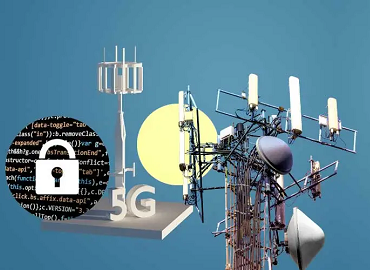
Three 5G Networking And Cybersecurity Predictions: A Retrospective
By Will Townsend
At about this same time last year, I published my predictions for three trends in 5G and security. I thought it might be fun to revisit them, measure my success and provide forward-looking insights for 2024. I often joke that meteorologists have the best jobs, accurately predicting the weather only half the time yet still managing to stay employed. As a technology analyst, I’m thankful I don’t have that same job pressure—but let’s dig in!
1: Fixed wireless access achieves terminal velocity; IoT security goes vertical
By all measures, my prediction about broad 5G fixed wireless access service adoption was on target. According to an article published by Fierce Wireless late last year, nearly 1 million FWA subscribers have been added over the past five calendar quarters. That’s an impressive number. Both T-Mobile and Verizon continue to grow FWA’s subscriber footprint stateside. T-Mobile is quickly approaching 5 million FWA subscribers, and with a drastically improved service anchored by its C-Band spectrum build-out, Verizon is closing in on 3 million subscribers. AT&T also joined the consumer 5G FWA party, launching its Internet Air service in a limited number of markets in late August last year. Beyond the U.S., there are scores of mobile network operators with plans to deploy 5G FWA services. Most notably, in India Reliance Jio plans to market its JioAirFiber offering with multiple download speed variants to over 200 million subscriber prospects across eight cities.
My prediction about the growth of IoT security tailored to operational technology environments was also accurate. In addition to Palo Alto Networks, a host of other companies, including Cisco, Entrust, Forescout, Fortinet, AWS, Azure and Google, are all helping enterprises secure workloads and use cases that leverage both on-premises and cloud infrastructure. Manufacturing automation, transportation and logistics, supply chain and remote asset monitoring are a handful of applications benefiting from the focus on IoT security services.
2: Mobile network slicing becomes a reality; Bad actors target the hybrid workforce
My prediction on the rollout of mobile network slicing is a swing and a miss. I expected mobile network operators to be more aggressive on 5G Standalone deployments in 2023 (a necessary pre-requisite for network slicing). The reality is that many were still focused on upgrading radio access network infrastructure and deploying mid-band spectrum to ensure the best balance of propagation and performance. However, signs point to 2024 as the year of 5G Standalone, given the slowdown in RAN spending witnessed last year and the progress made by AT&T, Verizon and other global carriers in deploying greater 5G network coverage.
By contrast, my security prediction that centered on hybrid workforce attacks landed squarely. Forcepoint published an insightful article on this topic at the end of last year. It highlights three key challenges that include securing cloud-based and internal private web applications, ensuring that BYOD strategies do not increase the likelihood of zero-day or phishing attacks and maintaining a data security posture that comprehends egress across email, cloud, web, networks and endpoints. SD-WAN solutions infusing security, often called secure access service edge, have great potential in addressing hybrid workforce security. The good news is that the SASE market is highly competitive, and solid offerings from Cisco, Fortinet, HPE Aruba Networking, Juniper, Netskope, Palo Alto Networks and Zscaler give customers a wide array of choices that deliver the scale required for the new enterprise work-from-anywhere micro-branch.
3: Open RAN market consolidates; The zero trust whitewash rolls on
Market players didn’t necessarily consolidate in 2023. Still, Open RAN experienced a watershed moment in December with AT&T’s announcement with Ericsson to move most of its network traffic to open standards-based infrastructure by 2026. Surprisingly, in speaking with AT&T executives before the announcement, I discovered that the company’s aggressive move to Open RAN is less about cost containment and more about flexibility and innovation. That makes sense because Open RAN enables programmability, but I also speculate that the move aligns with the U.S. federal government’s desire to domesticate the telecom supply chain. To this end, AT&T will also work with Dell Technologies and Intel to make its Open RAN deployment a reality.
https://www.forbes.com/sites/moorinsights/2024/01/05/three-5g-networking-and-cybersecurity-predictions-a-retrospective/?sh=6252e32a7aa0
